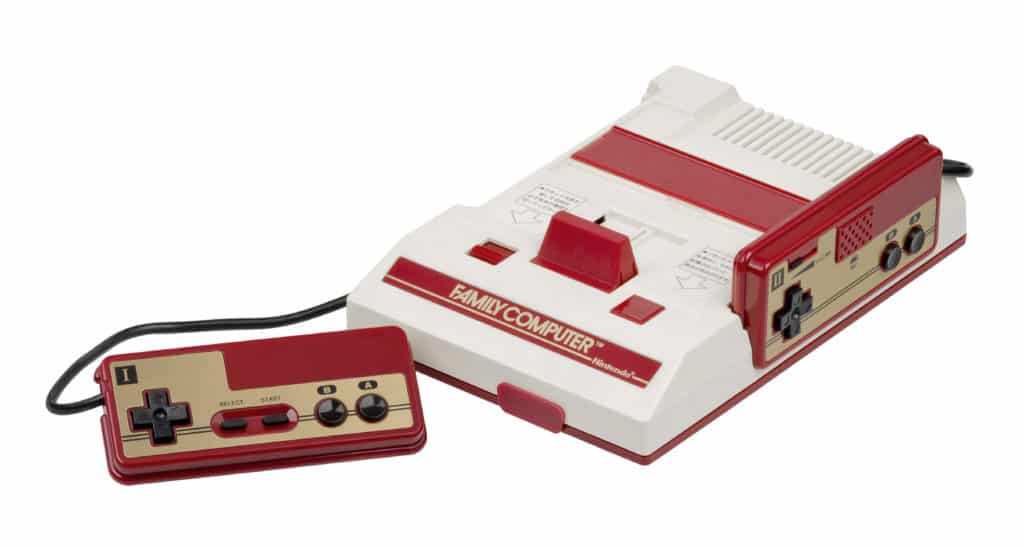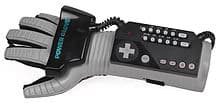
One simple handheld game may have changed the trajectory for modern video games. If Nintendo didn’t experiment with the Game and Watch, they might not have had the confidence to double-down on video games and change the world forever.
The Nintendo Game and Watch was a series of hand-held video games released by Nintendo in the 70s and 80s. Their success would give rise to the Famicom and then the Nintendo Entertainment System.
With the re-release of the Nintendo Game and Watch, the company is going back to its roots. This article will be a look back on the significance of the Game and Watch and how it changed video games forever.
A Brief History of Nintendo
This may be new info for you, but what makes the Game and Watch so significant is that Nintendo wasn’t originally a video game company. The Game and Watch was just one of many products they launched as they were kind of like the Sears of Japan R.I.P.
Nintendo as a company goes back a lot further than you may realize. Their origins begin all the way back in 1889–just four years after Marty and Doc leave the Old West.
And you wouldn’t believe it, but Nintendo first started out selling trading cards. These cards were called Hanafuda which meant “flower cards.” You could play several different games with them and they were basically used for gambling. These cards were so old that they were actually printed on a type of tree bark before moving into other materials.
If you’ve ever wondered why there was the random “flower power” in Mario Brothers, and the ability to shoot fireballs, it was because of these “flower cards.” This is the one original tradition that has stayed with Nintendo to this day.
Nintendo was first called Nintendo Koppai which meant “leave luck to heaven.” They started to expand by doing some cross-promotion with Disney to use their characters on their cards in 1955. They were then calling themselves Nintendo Yamauchi, then the Nintendo Trading Card C., ltd before dropping it all to just being Nintendo in 1963.
That’s a quick overview, but if you want the full history of Nintendo, check out my blog all about it here.
Moving Away From the Cards and into Technology
As I mentioned, Nintendo was expanding as a company but wasn’t able to narrow down the exact company they wanted to be. They dabbled in many different products including vacuum cleaners if you can believe it.
They then realized there was a huge market for children’s products. This led them to start making toys and since the technology was growing by leaps and bounds in Japan–they ventured into electronic toys.
Nintendo was struggling to keep their head above water in those early years because they were not an established toy company and were competing against gigantic, established Japanese toy companies.
The one thing that helped them compete was the introduction of an electronic arm they called the “Ultra Hand.” It was a robotic arm that could move and hold onto things. It was a big hit and sold over one million units. This gave Nintendo the confidence to keep exploring different technological toys.
One thing they came up with in 1972, was a solar-powered “light gun” and I think you can see where this is going.
A lot of the technical developments for Nintendo were due to a man named Konpai. He worked as a technician, and since there wasn’t a lot to do at Nintendo in those days, he had a lot of free time. This allowed him to sketch out ideas and designs. Konpai was the man behind Ultra Hand, and Nintendo realized he had talent.
Slowly Moving Into Video Games
Nintendo didn’t jump right into hand-held video games just yet. They played around with a few ideas including the “love tester,” electronic bongos, an electronic periscope, and computerized versions of games like Mah-jong. But this was helping them set the stage for video games.
One day in 1977, Konpai was returning home by train from a business trip. He looked around the train and noticed a bunch of people were using calculators just to pass the time.
There were no cell phones or portable electronics, and if you had read the entire newspaper, there wasn’t much left to do. A big hobby for many people in Japan was to do calculations on their calculators the way we play games on our phones now.
A light bulb went off in his head: what if there was another way for adults to kill time when they were out and about?
It still needed to be something that was discreet and wouldn’t disturb those around you. He didn’t even have the specific idea of a hand-held video game but knew this was an idea worth exploring so he took it to president of Nintendo–Hiroshi Yamauchi.
They went to calculator producer Sharp electronics about the idea of a possible collaboration and struck a deal with them. The funny thing is, Nintendo’s foray into video games had nothing to do with children. They wanted to appeal to adults that wanted something to pass the time but needed it private so no one could see they were playing a child’s game.
The Creation of the Game and Watch
So Nintendo had a few specifications that were key in the development of an electronic toy. It had to be private, discreet, and fit in the palm of an adult’s hand.
They decided that a device that was 4 x 3 inches would be the perfect size. They could then come up with simple electronic games that could be played on these devices. They also had the idea to combine the game with the features of a watch.
The very first game they came up with for the Game and Watch was called “Ball.” It involved a character having to juggle balls in the air. Not only was this the first hand-held video game ever, it was the first one using an LCD display.
Ball was simple, but it got progressively harder. This was a key development meaning that anyone could learn it quickly, but you wouldn’t beat the game in a short while. You would have to develop your skills to go further in the game and this is the underlying attraction to video games.
The concept of simplicity would be important for all the Game and Watch titles they came up with: you should be able to pick up the game and start playing without having to read a manual.
The silhouetted character used in those first few games would come to be known as “Mr. Game and Watch. You can see him in some modern games like Super Smash Brothers Ultimate.
The Response to the Game and Watch
So the Game and Watch was originally intended for adults–but they didn’t seem to pay it much notice. One group did, however–kids.
Millions of children in Japan became enamoured with these handheld games. This was great for Nintendo for a few reasons. One is that they could keep the games more simple and childish, and the second is they didn’t have to worry about making the Game and Watch look stylish or elegant.
Nintendo quickly brought out 5 news games with a gold and silver series. Besides ‘“Ball,” some of the other games would include “Fire,” and “Manhole.”
Nintendo quickly improved the technology of the Game an Watch and offered new versions with wide screens. The screen was now 1.7 inches wide and could also use color. You then saw games like “Parachutes,” “Octopus,” “Balloon Fight,” “Donkey Kong Jr,” and a little character named Super Mario…
It also didn’t take long for Nintendo to put out Game Watches with licensed characters and the first one was their old pal Mickey Mouse. By now, Nintendo had 18 different Game and Watches–but they didn’t stop there.
The Evolution of the Game and Watch

The next big thing Nintendo did was release a Game and Watch that had a double screen. They wanted to expand the capabilities of the gameplay and the first game released for the double-screen was called “Oil Painting.”
You now had to control both screens at the same time and it was showing the advancements of what Nitnedo was capable of creating. The next double-screen title they put out was one that was important to the future of video games: Donkey Kong.
The Game and Watch had now spread from Japan to America, and the release of Donkey Kong was instrumental in the future of Nintendo because of one thing: the new control pad.
Donkey Kong was supposed to use a small joystick to replicate the experience of playing an arcade game. But this was going to cause a few problems; the console wouldn’t be able to close properly, and there was also the risk that the joystick could snap off.
To workaround this problem, Nintendo came up with a new control option that put different directional buttons close together so they could be used easily together. It was called the D-pad and was instrumental in the success and development of the NES and Super Nintendo, and was pretty much the standard for the entire gaming industry.. You could play the game without having to look at what way you were pressing.
From the double-screen, Nintedo moved into new table top video games. They had color screen and panoramic viewing options. The movements also allowed for a color screen that used very little battery. They accomplished this by using a mirror system and a device could run for up to 3 years on 2 C batteries before needing to be changed.
At this point, Nintendo had brought in other licences characters such as Snoopy, and Popeye. Popeye, interestingly, would be the driving force behind the creation of Mario and Donkey Kong for the original arcade versions. You need to check out my article all about this here.
Nintendo Moves into the Future

The Game and Watch continued into the 80s, but Nintendo had been playing around with a home video game system before that. As far back as 1972, they created the Magnavox Odyssey which was the first commercially available video game console.
In 1977, they released the Color Tv Game 6, and the Color TV game 15. The 6 and the 15 indicated how many games were included with each. They had obviously released arcade games such as Donkey Kong, but needed a new system to showcase the advancements in technology
Enter the Family Computer or Famicom.
The Game Watches were a hit and Nintendo had sold over 43 million of them. In 1982, they came up with the early prototype which they called the “Advanced Video Game System.” It contained a tape drive, the light gun I mentioned earlier, a joystick, and at its core, a computer similar to the Atari or Commodore 64.
This was the prototype and the Famicom was about taking this idea but making it cartridge based. For the control pads, it made sense to take the same type they used on the already popular Game Watch as they would seem familiar and easy to adapt to.
They launched the Famicom in 1984 with Popeye, Donkey Kong, and Donkey Kong jr. It didn’t catch on right away, but soon became the best-selling console in Japan. Next, they had to take it to America, but that required a few changes.
The Great Video Game Crash of 1983
I’ve covered this a lot before, but there was a time when companies in the US wanted nothing to do with video games. Atari had ruled the landscape and then crashed in spectacular fashion. A once billion-dollar industry was now only worth a few hundred million and toy companies wanted nothing more to do with games.
If you want to read all about the great video game crash of ’83, and how E.T. probably caused it, check my article out here.
NIntendo had a tall order on their hands and were entering into the market at the worst time. They needed to give the Famicom a total overhaul, but keep the heart of it still the same. They redesigned the console in a futuristic space grey instead of the red and white version that already existed.
They also needed to separate themselves from anything to do with video games. They changed the top loading cartridge system (that was just like Atari) to a front loading design which seemed more like a VCR (read all about the history of VHS vs Betamax here).
They also needed to change the terminology. Instead of being a console, they had a control deck. Instead of using video games, they used “Game Paks.” Instead of using a joystick, they had a “Control pad.” And instead of being called a video game system, Nintendo would be called an “Entertainment System.” And that led to their rebranding as the Nintendo Entertainment System or NES.
The Re-Release of the Game and Watch & Final Thoughts
I don’t need to go over the rest of the story here–because you already know it. The NES revolutionized video games and gave rebirth to the entire video game industry. The NES was slowly released in 1985, and by 1986 was available everywhere.
The NES gave rise to the real era of video games which has only continued to grow stronger and stronger over the last 30 years. And none of this wouldn’t have happened without the Nintendo Game and Watch.
The Game and Watch gave Nitnedo the ability to create a new video game movement and redefine what video games could be. What was created out of an interesting way for adults to pass the time, became a staple of pop culture and a beloved part of everyone’s childhood.
The Game and Watch is now back! Nintnedo is bringing back the handheld classic and for many, this is the first time they are becoming aware of the Game and Watch. There has been a big return to the video games of the past with the releases of the:
(just click any of those links to check them out on Amazon. I have them all and they’re AMAZING)
Nintendo is releasing a Super Mario Bros edition of the Game and Watch on November 13th. The new devices look amazing, and the game will come with Super Mario Bros, plus Super Mario Bros.: The Lost Levels, as well as the classic “Game Ball.”
This is an awesome tribute to the history of the Game and Watch combined with the video game–and character–that took Nintendo to the next level.



